
WOMEN'S PROFESSIONAL
BASEBALL
Along with many other areas of American life during WW2, Major League
Baseball was taking a hard hit. With many teams' star players going off to
fight the war, the competition level declined dramatically. In an effort to
help maintain America's love for baseball, Philip K. Wrigley, owner of the
Chicago Cubs and the famous chewing gum company, came up with the idea for
professional women's baseball. With this thought he created the All American
Girls Softball League (AAGSL) in the spring of 1943. The name however was
later changed to the All American Girls Baseball League (AAGBBL). Created as
a non-profit organization, the basic idea behind AAGBBL would be to give the
fans an affordable time of entertainment close to home. Teams were formed of
women from all over the nation and Canada, each team composing of 15
players. The play in this league was a mixture of baseball and softball,
combining the use of a regulation softball and underhand pitching with the
men's longer basepaths and baserunning rules.
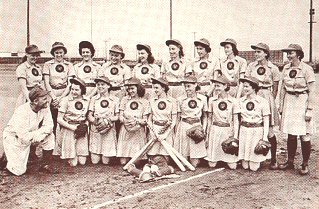
Attendance to the games began rather well, with the fans interested in this idea of the women playing a supposedly game of "men". Total attendance for the inaugural season of 1943 was about 176,612, with everyone amazed at the skill in which the women played. Wrigley felt that the league would be the most successful by giving a patriotic mood to the war effort by making the women appear as the All American girl next door. Each player was required to join in an etiquette class and a league contracted beauty salon was in charge of helping each girl look her best. The league maintained success until the war was over, but declined in popularity once MLB players returned and the AAGBBL was no longer in 1954.
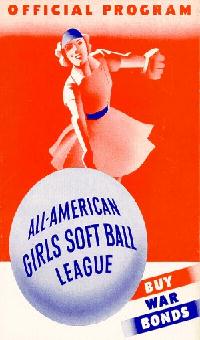
THE WAR AND MAJOR LEAGUE BASEBALL
WW2 had major effect on everyone involved with MLB. Famous players were taken away from teams. Ted Williams, one of the games greatest hitters, enlisted in the Navy where he was very successful as one of the greatest fighter pilots of the time. Williams' 20:10 eyesight was key in his skill as a pilot. Williams would again leave baseball to help serve in the Korean War. His duty to his country was always his proudest accomplishment.
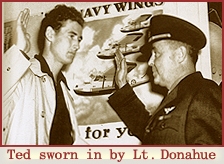
Probably a more interesting story/player would probably be Hank Greenberg, who was famous for his decisions involved with being Jewish. Like Williams, he also left his team for the war. Greenberg, even though legally excused form having to enlist because of his age, did so anyway following the attack on Pearl Harbor. He served in the Army Air Corps and returned back to MLB in 1945.Greenberg is pictured below.

Some of the teams were supportive of the war effort in other ways. During the war, fat was used to make explosives. Because of this, several ballparks, including Ebbets Field, had "Fat Day" at the ballpark. On this day, all fans who brought in a container of fat would be given free admission to the day's game. People were also encouraged to buy war bonds at the games and the use of things such as bands playing patriotic music or red, white, and blue uniforms for the players helped inspire the fans to buy the war bonds. The game itself was affected greatly, mainly due to the loss of players, as I have already mentioned above. With so many players being drafted, many minor league teams had to be shut down permanently. However baseball during this time was truly important to America. It was so important that when President Roosevelt was asked if the games should continue to be played during the war, he wrote a letter to Commissioner Kennesaw Landis saying that "I honestly feel that it would be best for the country to keep baseball going." A picture of the letter is listed below.

Baseball was also an important recreational time for many soldiers throughout the war. As long as the soldiers had a bat, a ball, and an open field, they could pick up a game of baseball. There were leagues created, with major leaguers as captains, with each team representing a particular unit. While playing baseball, the soldiers could almost, if just for a little while, forget where they were and just have fun. Pictured below is a pick up game in a field and in another a makeshift stadium located on one of the bases.
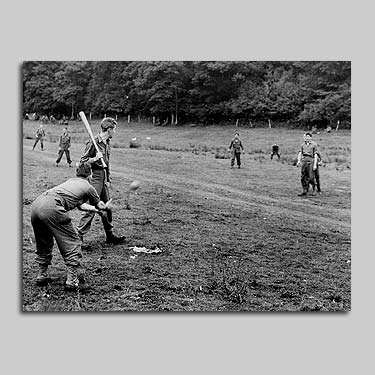
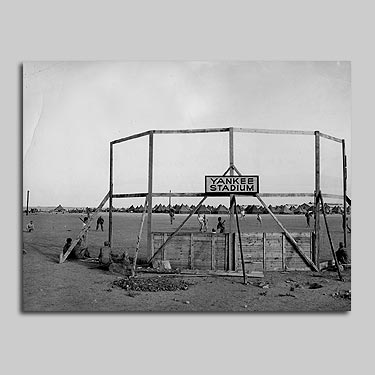

View My Guestbook
Sign My Guestbook
My Favorite Sayings: Click to View or Add Text.
Famous Major Leaguers Who Served in World War II
Baseball In WW2 Sites
Pro Women's Baseball Official Site!
Ted Williams' Website
Baseball Enlists: The Hall Of Fames War Website